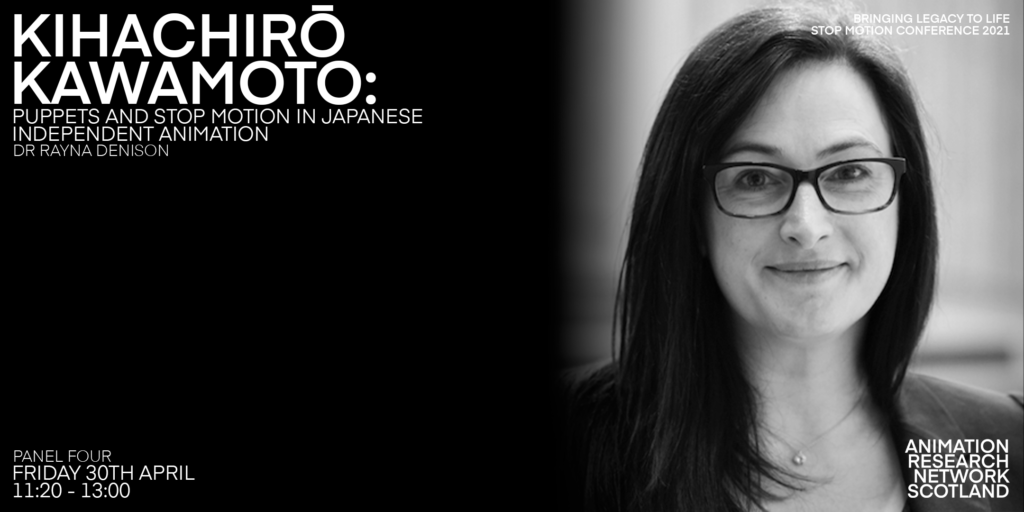Rayna Denison
Dr Rayna Denison is a Senior Lecturer and Head of Department for Film, Television and Media Studies at the University of East Anglia in the UK. She is a specialist in contemporary Japanese cinema and animation and is the author of Anime: A Critical Introduction. She has also edited two collections: the Eisner Award-nominated Superheroes on World Screens (co-edited with Rachel Mizsei-Ward) and another titled Princess Mononoke: Understanding Studio Ghibli’s Monster Princess. Her articles on Japanese film and animation can be found in world-leading journals from the Journal of Cinema and Media Studies to Animation: An Interdisciplinary Journal, Japan Forum and Velvet Light Trap. She is currently working on a monograph about the industrial history of Studio Ghibli.
Abstract
The works of Kihachirō Kawamoto, one of Japan’s most high-profile puppeteers and stop motion animators, provide a window into the worlds of independent Japanese animation beyond anime. Kawamoto’s use of traditionally styled dolls and models, plus his use of abstraction alongside Asian and Japanese folklore make him one of Japan most significant and unusual animators. Kawamoto has been the subject of several academic analyses (Tomomori 2020), but these have tended to focus on his puppeteering techniques or on the Japaneseness of his influences, for example his use of Japanese folklore or his creation of a puppet museum (Erlich 2012). In this paper, I analyse two examples of Kawamoto’s early puppet animations—The Demon (Oni, 1972) and Dōjōji (1976)—as exemplars of his early work, before turning my attention to outliers like Tabi (Travels, 1973) and his European short film with Jiří Trnka, Briar Rose (1990), in order to assess how Kawamoto’s experimental approaches to animation enriched and transnationalised his practice over time. In doing so, I aim to investigate some of the ways Kawamoto has played with local and transnational techniques and tropes, and in doing so has reshaped Japanese stop motion animation.


